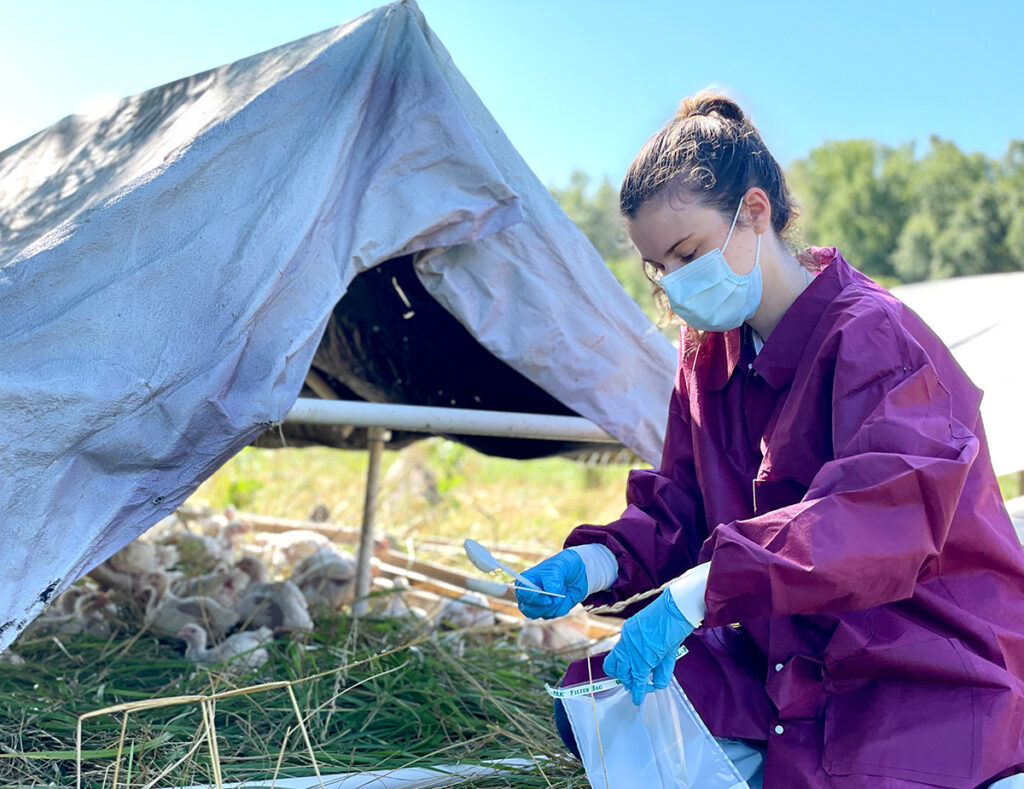
Study compares Salmonella rates on commercial and backyard poultry farms
By Canadian Poultry magazine
News HealthResearch from North Carolina State University raises concerns over antibiotic resistance in both farming systems.
 North Carolina State University researcher Jessica Parzygnat tests for Salmonella on a backyard farm.
North Carolina State University researcher Jessica Parzygnat tests for Salmonella on a backyard farm. A recent study conducted by researchers at North Carolina State University revealed significant disparities in Salmonella prevalence between large commercial poultry farms and smaller backyard operations, prompting concerns over antibiotic resistance in both systems.
Jessica Parzygnat, lead author of the study and a Ph.D. graduate from NC State, emphasized the importance of understanding the spread of Salmonella in varying poultry production systems, particularly focusing on backyard broiler farms where chickens are raised for meat consumption.
“Investigating backyard farming is crucial as its popularity grows in the U.S.,” Parzygnat says. “Despite the assumption that backyard farms are safer, our study found Salmonella rates to be unexpectedly higher than anticipated, underscoring the need for further research and preventive measures.”
The study examined 10 backyard and 10 commercial flocks, ranging from small-scale operations with as few as 22 birds to large commercial enterprises housing tens of thousands of birds. Surprisingly, while it was anticipated that Salmonella rates would be lower on backyard farms, the findings revealed otherwise, with 19.1 per cent of samples from backyard farms testing positive for Salmonella, compared to 52.3 per cent in commercial farms.
“This study highlights the need for vigilance in both small and large-scale poultry operations.”
“This study highlights the need for vigilance in both small and large-scale poultry operations,” Parzygnat stresses. “Salmonella poses a significant risk to public health, especially considering the prevalence of multidrug-resistant strains in both farming systems.”
The research, published in Foodborne Pathogens and Disease, outlined the methodology and findings, including the identification of common Salmonella serotypes and the presence of multidrug-resistant isolates in both production systems.
Commenting on the implications of the study, Parzygnat emphasized the importance of consumer awareness and adherence to food safety practices. “Consumers should ensure poultry products are cooked thoroughly and practice good hygiene to minimize the risk of Salmonella contamination,” she advises.
The study, funded by the USDA NIFA and the FDA GenomeTrakr program, marks a significant step in addressing the complex dynamics of Salmonella prevalence and antibiotic resistance in poultry production systems. With Salmonella outbreaks linked to backyard farming on the rise, the research underscores the urgent need for targeted interventions and enhanced biosecurity measures to safeguard public health.
Print this page